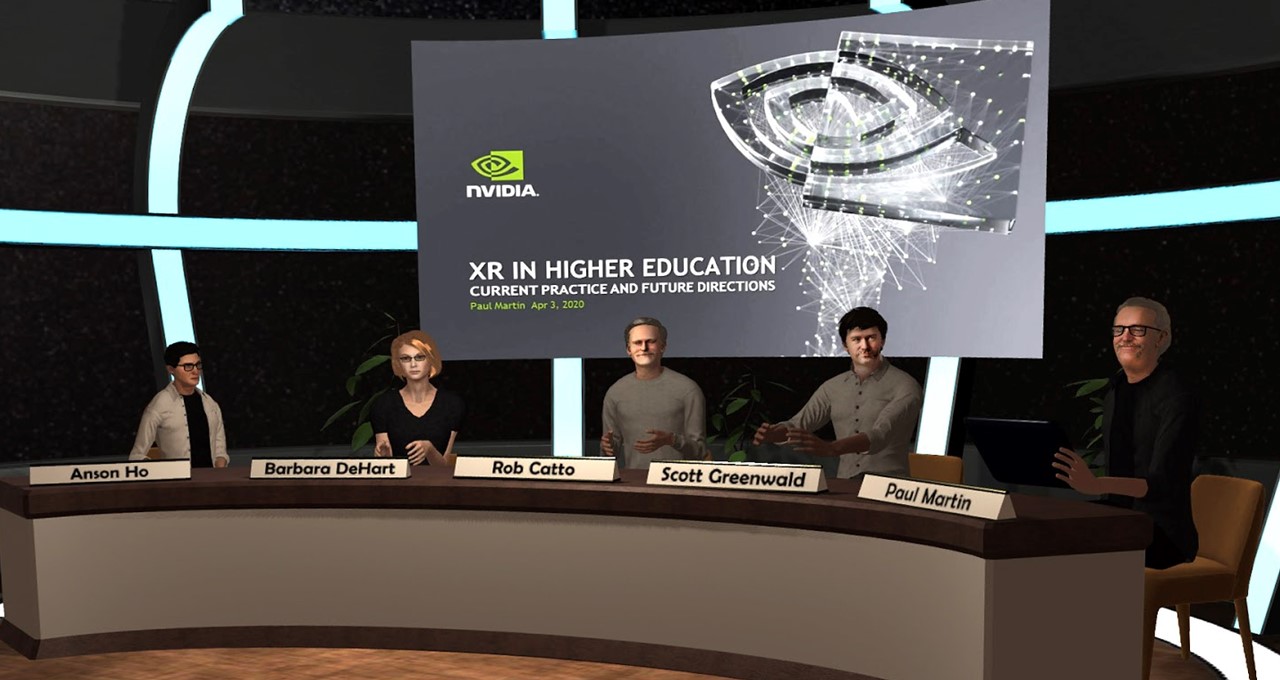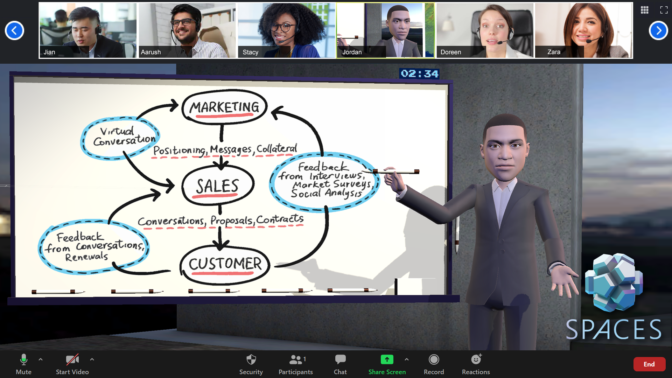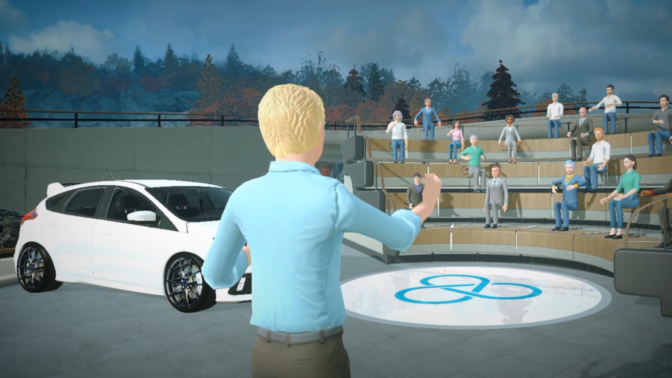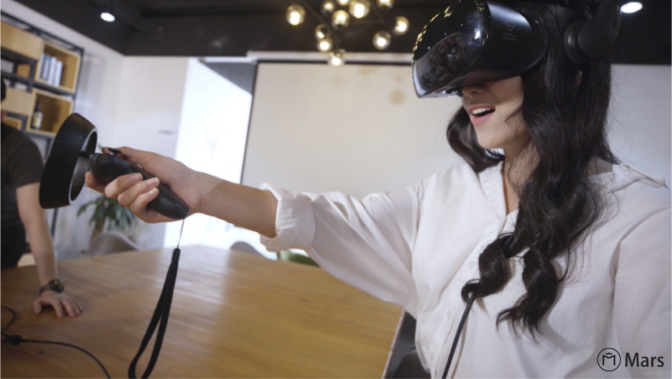Practicing social distancing to help keep the community healthy doesn’t mean we have to do it alone. As working remotely or taking online classes has taken off, virtual reality can help us stay connected and productive in this new norm.
Learn how the latest GPU-powered VR tools are taking people to places they can’t physically go, and see how these technologies can bring us together.
Create Your Own VR Environment
The pandemic propelled Zoom into the top tier of video conferencing apps, joining the likes of Webex and Skype. Now, SPACES has created a GPU-accelerated VR plug-in for those apps.
From presentations to webinars to classrooms, SPACES allows users to set up and deliver immersive environments. The Windows desktop application can run on NVIDIA RTX GPUs, providing teams with the best graphics performance for virtual worlds.
“This app has been able to bridge the social distancing gap between people, magically blend video calls, virtual reality and interactivity into a delightful and transformative communication experience for all,” said Shiraz Akmal, co-founder and CEO of SPACES.
Learn how you can get access to SPACES for 50 percent off for the first three months.
Set Up Meetings in VR
If you want to bring people together in a virtual meeting, VIVE Sync is just the tool.
Now available in free beta, VIVE Sync is a remote collaboration and meeting application built to improve communication and productivity. Secure and intuitive to use, it allows up to 30 attendees to meet in a virtual space. It’s ideal for internal creative meetings, online classroom discussions, virtual press conferences or even remote sales presentations.
“VR has the ability to connect and engage remote teams and employees as if they were together in the same physical room,” said David Sapienza, assistant vice president of Content Development and Production at HTC VIVE. “VIVE Sync enables colleagues and partners across the world to interact in a shared virtual space, increasing productivity, collaboration and team chemistry.”
Learn more about VIVE Sync and join the upcoming PNY webinar to learn how Quadro RTX and HTC VIVE are reinventing collaboration.
Bring Distance Learning and Events to a Virtual World
As classes and events move online, teachers and event organizers are creating content in collaborative VR apps such as Engage.
With Engage, teachers and companies can create VR trainings and experiences to host meetings, presentations, classes and events with people across the world. A variety of immersive experiences can be built with an extensive library of virtual objects, effects and virtual locations available on the Engage platform.
HTC recently hosted its VIVE Ecosystem Conference (V²EC) in Engage, allowing global attendees to join virtual sessions.
HP Inc. also used Engage to host a panel session, “XR for Higher Education,” for GTC Digital 2020.
Apps like Engage make it easy for students, teachers and employees to populate pre-built immersive environments with their own digital content like 3D models, PowerPoint presentations or movies, and then bring others into their personalized virtual simulations.
Design Buildings in VR
The architecture, engineering and construction industry was one of the earliest adopters of VR, and now AEC companies are leaning into VR to keep projects moving forward.
To help designers work more efficiently, SHEENCITY delivers a comprehensive solution for home design and remote reporting. The China-based company’s software cloud platform, Mars, applies VR technology to project workflows.
Running on NVIDIA Quadro and GeForce GPUs, Mars allows designers to create VR scenes, output results and provide reports on the latest plans and designs. Users can log into their Mars account and connect with multiple people online to collaborate on the same project. People can enter the same VR scene and modify materials, backgrounds and space effects in real time.
Learn more about Mars.
Bring Automotive Models to Virtual Life
Automotive design requires teamwork and highly accurate visualizations. That’s why Ford is using the VR collaboration features in Autodesk VRED to keep their designs rolling.
The management team of Ford’s design department is using VR at home to inspect and provide feedback on digital design data, including collaborative, immersive sessions with their team. The VRED VR experiences are powered by dual NVIDIA Quadro P6000 workstations, which provide designers the performance and speed needed for VR workflows.
VRED also offers NVIDIA VRS for eye tracking with the VIVE Pro Eye, allowing teams to maximize quality in VR designs. Learn more about Autodesk VRED.
Check out more tools and solutions that can help you work virtually, anywhere.



